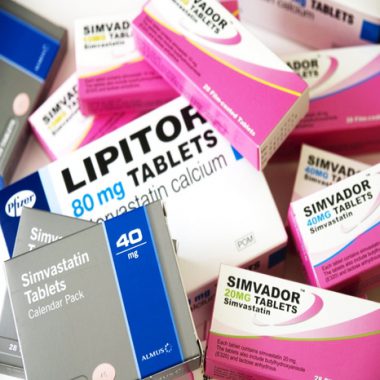Almost 12m people in England would be on statins if GPs followed current NICE guidelines in full, a study has revealed.
The study, published in the British Journal of General Practice, found that under the 2014 guidelines – which lowered the QRISK2 risk threshold for statin treatment from 20% to 10% – 11.8m adults are eligible.
Using data from the Health Survey for England 2011, Harvard University researchers found that under the current criteria patients eligible for statin treatment includes:
- 37% of all adults aged 30-84;
- Almost a third of males, and 10% of females, aged 45-59;
- 95% of males and 66% of females, without cardiovascular disease, aged 60-74; and
- Everyone above the age of 75.
The study, funded by Swedish Society of Medicine, found that each GP would need to provide statin therapy to almost 200 currently untreated patients, who are eligible for treatment under the existing guidelines.
These recommend GPs start patients on statin treatment if they have a 10% or more risk of CVD in the next 10 years, rather than the previous target of 20%.
According to the researchers, implementing this guidance in full would see GPs severely stretched.
Harvard University researcher Dr Peter Ueda, who led the study, said: ‘Providing statin therapy to a large proportion of the population will substantially increase GP workload and implementation of the NICE guidelines should consider costs for primary care given the high and increasing pressure on GPs.’
Previous studies have reported limited evidence on the effects of statins on older people.
Researchers recommended, in line with NICE guidelines, that a ‘patient-physician discussion should precede statin therapy, especially where age is the only risk factor’.
They also stressed the importance of providing younger patients with a long term CVD risk assessment if they have high levels of many risk factors but still fall below the risk threshold.
Andrew Green, clinical and prescribing policy lead at the GPC, said: ‘When the guidelines were first introduced much of the concern arose from a belief that the risk levels were set so low that, in effect, NICE was recommending blanket pharmacological intervention for a large section of the population, and furthermore the section of the population most likely to suffer problems of polypharmacy and adverse events.
‘This paper confirms the epidemiology underlying that concern.
‘Since then, I think there has been a shift in attitudes with more of an emphasis on individual patient choice and an awareness of the importance of considering frailty and multi-morbidity, which probably explains why the long-term take-up of statins in the 10-20% risk band has remained relatively low, especially among more elderly patients.’
RCGP chair Professor Helen Stokes-Lampard said: ‘We need to get the risk scores right. If we find that all men over 60 and all women over 75 are going to be eligible for statins with new risk scoring, regardless of any other risk factor, then it should ring alarm bells – because it is not clear that every 60 year old man or 75 year old woman is going to benefit from statin therapy.’
She added: ‘It’s important that as new evidence becomes available, it is taken on board as guidelines for healthcare professionals are updated – but NHS resources and workforce must also be a factor.
‘We agree with researchers that the workload implications for GPs and our teams with so many people being potentially eligible for statin therapy is enormous, so this must be matched with appropriate resources.’
A study carried out by GPs in 2015 found that only a tenth of patients with a 10-20% predicted risk of cardiovascular disease chose to take a statin when given the opportunity.
Experts have urged GPs to challenge NICE prescribing guidance and leave the choice to their patients and NICE was forced to withdraw its suggestion to add a QOF incentive at this threshold following heavy critique from GP leaders in 2015.
Note: This story was amended at 09:45 on 3 August to reflect that 12m is the total number of people who would be on statins.
Pulse October survey
Take our July 2025 survey to potentially win £1.000 worth of tokens












